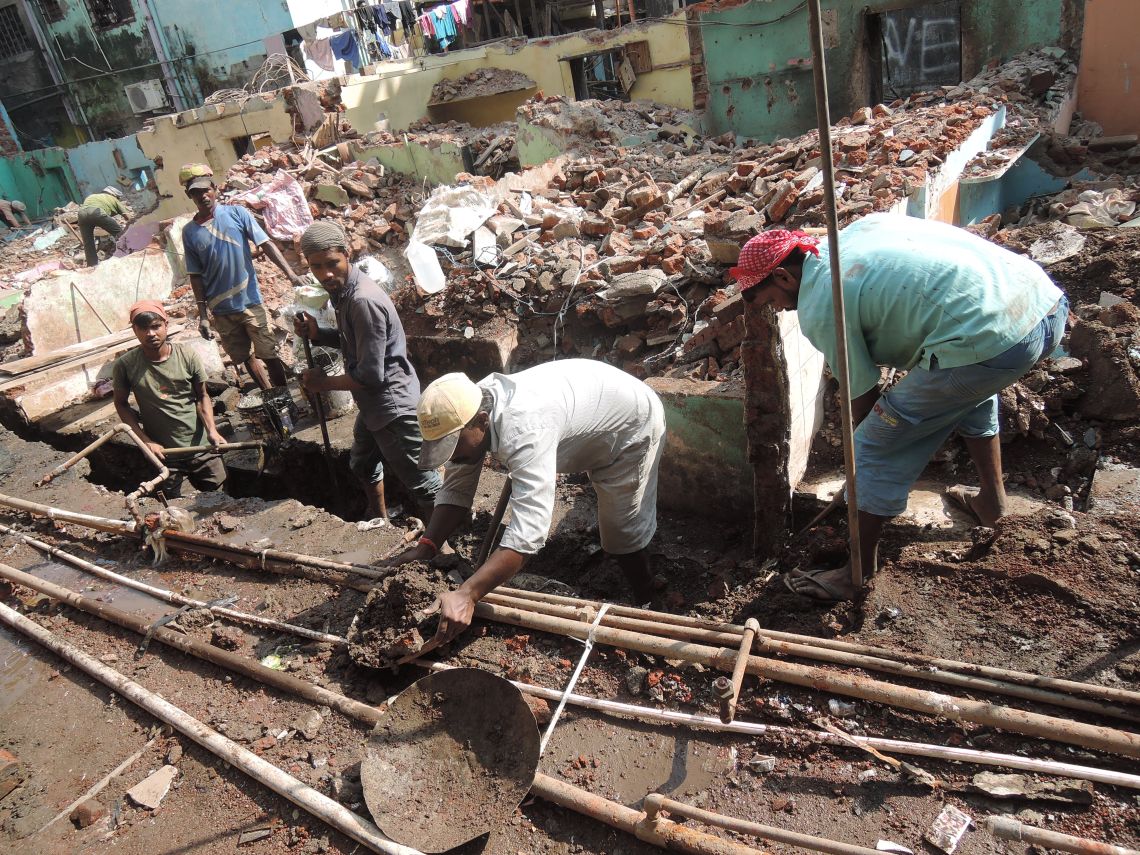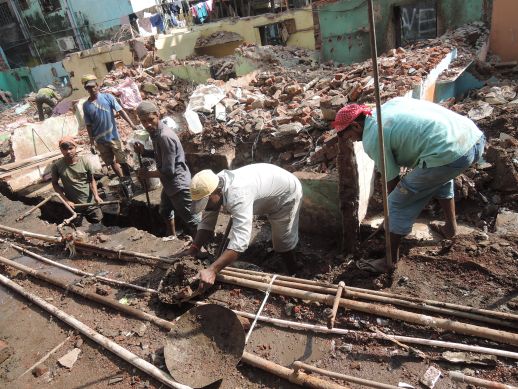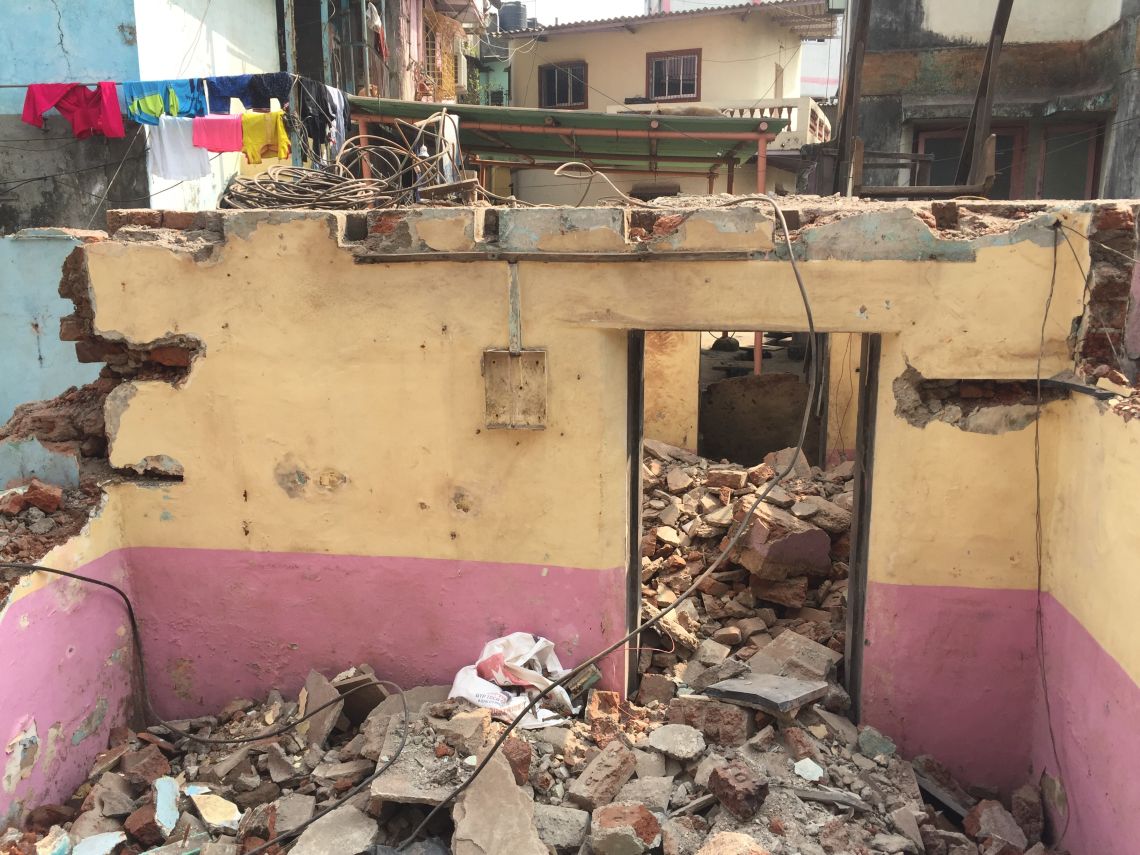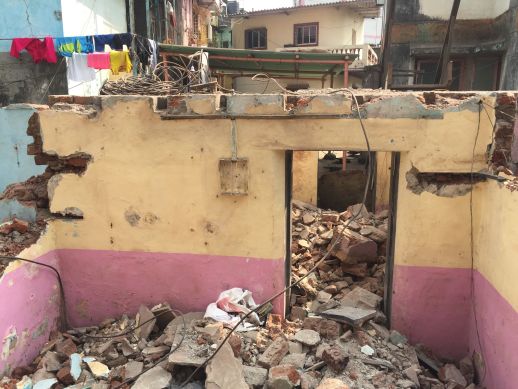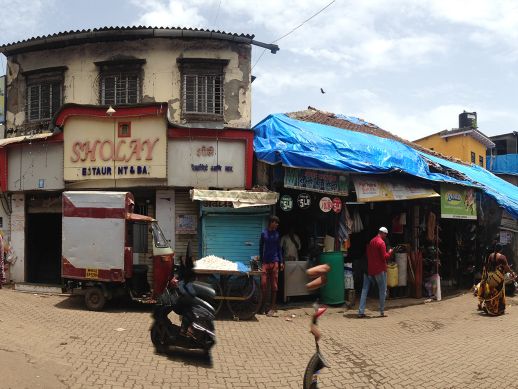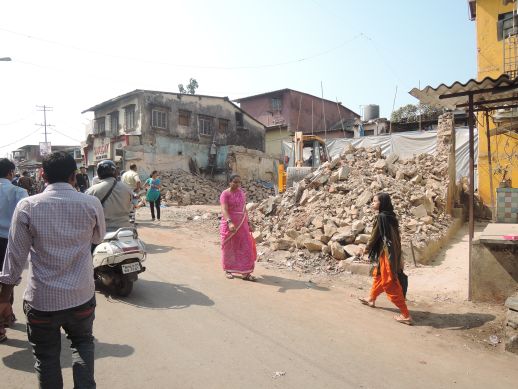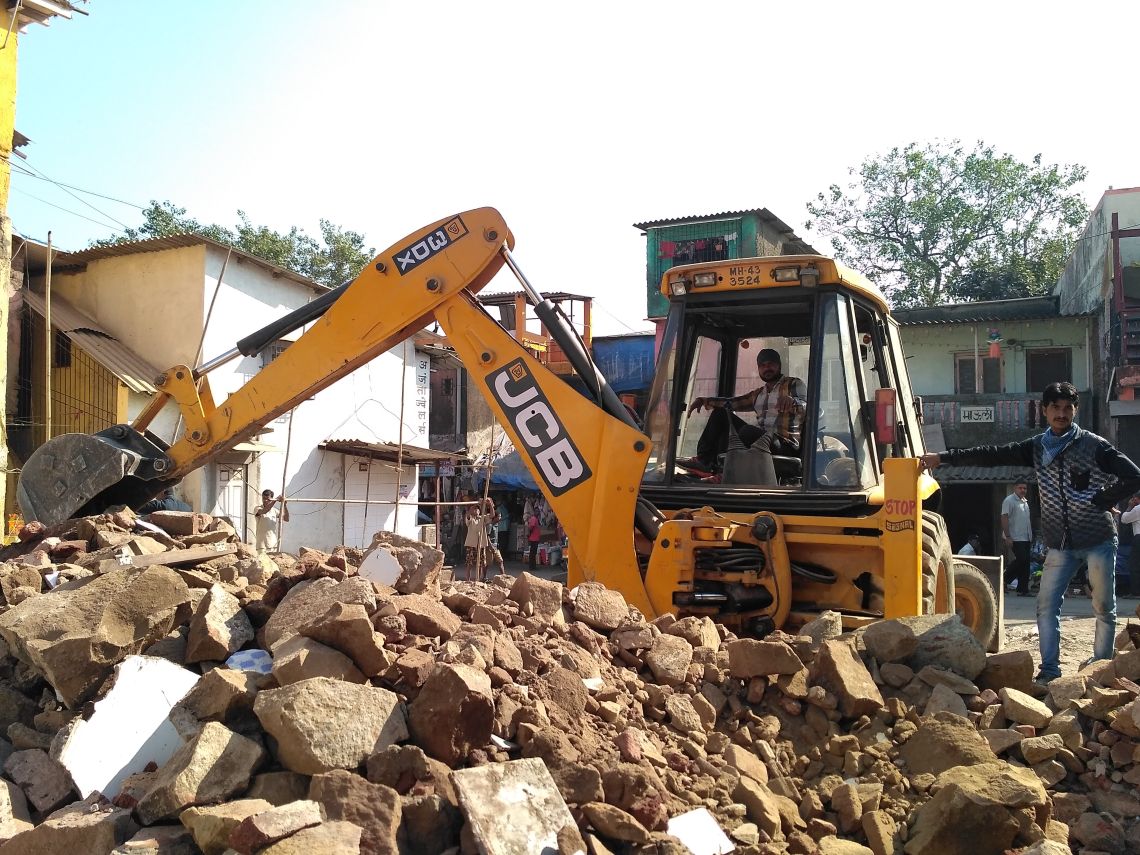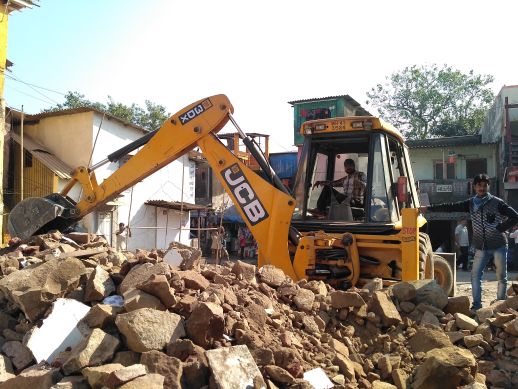Use-value vs Exchange value

Use-value vs Exchange value
Construction represents a large share of any country’s economy. In India the construction industry represents about 10% of the GDP and is the second employer after agriculture. No matter how much we hear that the real-estate market is down, many Indian cities look like giant construction sites.
In Mumbai the entrails of the under-construction metro grow day by day, pipes are repaired, skyscrapers shoot up ever higher on the horizon, and every neighbourhood has newer, bigger and more expensive buildings replace the old. Mumbai seems like a growing, mutating organism, shedding its old concrete skin for a new one, with added layers and new patterns. However, what looks like a physical adaptation to the city’s economic growth and new position in the global economy is actually more like a parasitic takeover of its homegrown habitat.
Urban habitat is not just about shelter. It is about people’s habits, the way they interact and appropriate space, their livelihoods and lifestyles. Habitat can’t be built by a developer. It can only be produced over time by inhabitants who appropriate space and use it as a resource and means for action. The generic architecture and infrastructure we see popping up everywhere leaves no space for appropriation. On the contrary, it is designed to prevent it. New people fill up new structures meant for passive consumption. Sometimes, they are not even meant to be consumed but only to be bought and sold by investors. Their value is not generated by their use, but by their capacity to be traded as commodities.
The kind of urbanism emerging today in Mumbai and all over India is not made by people or architects, but by lawyers and accountants working for investors. Excel sheets have replaced plans and designs. Indeed, the best real estate product is one that functions just like a share or a bond. It is highly liquid and abstract. Many of the housing units are not meant to be ‘inhabited’. In fact, any trace of identity and occupation could reduce their exchange value. The world-class city being produced resembles a business hotel: functional, impersonal and exclusive
Typically, a generic high-rise compound in a new development comes with a parking lot meant for those who commute to school and work by car. It creates what Graham and Marvin call splintered urbanism where cities are experienced as exclusive zones connected by transportation infrastructure, but the street itself remains a no-go zone.
While it is essential to produce the kind of infrastructure that allows people to move from one part of the city to the other, we must also invest in the preservation and production of ‘neighbourhoods’, which are more than a collection of buildings. But how do we insure that new constructions produce actual use value for the neighbourhoods where they stand, and not only for developers? Where people can walk and loiter, and occupy with greater control? Part of the answer could be found in neighbourhoods that are usually seen as dysfunctional and beyond repair.
Along with fancy new residential and office complexes, Mumbai continues to have many old neighbourhoods and urban villages, where use value has historically taken precedence over exchange value. These neighbourhoods were developed over time by their inhabitants with little to no help from the municipal authorities. They are far from perfect and need all the support they can get. What is to be emphasized is that they are also active localities which are also being transformed. Old structures are being brought down and new ones keep coming up by local builders and contractors. Here too floors are added onto chawls or a bank precinct gets included in an older structure. But the neighbourhood and street continues to thrive with every little change made. Mainly because at the heart of the process is the inhabitants being involved and engaged with the process of the production of the neighbourhood. They are not just buyers or investors. The dominant logic remains keeping the value of space in focus.
Historically, urban planning has always been used as a way to mitigate the power of private ownership. Today, we need to remind ourselves this more than ever before.
Real estate investment should work for cities and its inhabitants and not dictate what they should do or be.
This piece appeared in The Hindu on January 21, 2018
